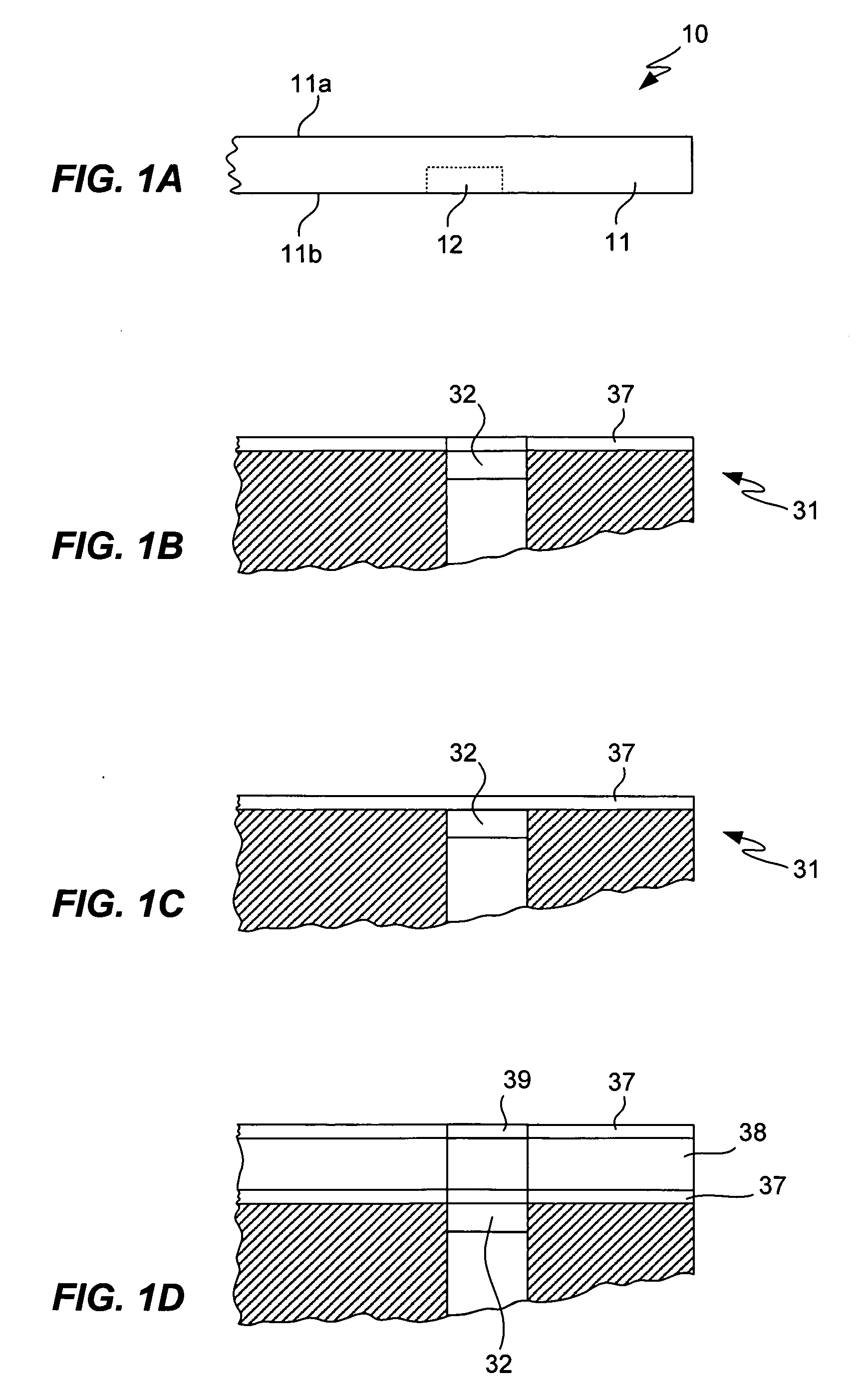Polishing pad and method of producing same
a technology of polishing pad and slurry, which is applied in the direction of flexible wheel, manufacturing tools, lapping machines, etc., can solve the problems of uneven abrasion rate, distorted or cracked surface portions of polishing pad near the window, and inability to achieve flatness and smoothness, so as to achieve uniform abrasion rate and avoid scratches and waviness.
- Summary
- Abstract
- Description
- Claims
- Application Information
AI Technical Summary
Benefits of technology
Problems solved by technology
Method used
Image
Examples
experiment 1
[0067] Transparency of these transparent pads of Test Examples 1 and 2 was measured in order to study the effects of the purity of the hardening agent added to the transparent resin. The measurement was taken by cutting out a test piece of 30 mm×30 mm with thickness 1.5 mm from each polishing pad and by using a spectrophotometer (DR / 2010 (tradename) produced by Central Kagaku Kabushiki Kaisha) under the conditions shown in Table 1.
TABLE 1Resolution1 nmLight-emitting element (light source)Halogen lampLight-receiving elementSilicon photodiodeRange of wavelength350 nm-900 nm
[0068] The results of Experiment 1 are shown in FIG. 7 wherein the curve indicated by symbol E1 represents the transparency of the polishing pad of Test Example 1 and the curve indicated by symbol E2 represents the rate of transparency of the polishing pad of Test Example 2.
[0069] These curves show that the transparency of the polishing pad of Test Example 1 is 10% or higher in the wavelength range of about 370 n...
experiment 2
[0072] Transparency of the polishing pads of Test Examples 3-5 was measured to study the relationship with the thickness. The measurement was taken as explained above with reference to Experiment 1 by cutting out a test piece of 30 mm×30 mm with thickness 1.5 mm from each polishing pad and by using a spectrophotometer (DR / 2010 (tradename) produced by Central Kagaku Kabushiki Kaisha) under the conditions shown in Table 1.
[0073] The results of Experiment 2 are shown in FIG. 8 wherein the curves indicated by symbols E3-E5 respectively represent the transparency of the polishing pads of Test Examples 3-5. These curves show that the transparency can be improved by reducing the thickness of the polishing pad.
experiment 3
[0075] Transparency of the polishing pads of Test Examples 6-8 was measured to study the relationship with the thickness of polishing pads with a rough front surface. The measurement was taken as explained above with reference to Experiment 1 by cutting out a test piece of 30 mm×30 mm with thickness 1.5 mm from each polishing pad and by using a spectrophotometer (DR / 2010 (tradename) produced by Central Kagaku Kabushiki Kaisha) under the conditions shown in Table 1.
[0076] The results of Experiment 3 are shown in FIG. 9 wherein the curves indicated by symbols E6-E8 respectively represent the transparency of the polishing pads of Test Examples 6-8. These curves show with reference to those in FIG. 8 that the transparency drops if the surface is made rough but can be improved by making the polishing pad thinner.
PUM
 Login to View More
Login to View More Abstract
Description
Claims
Application Information
 Login to View More
Login to View More - R&D
- Intellectual Property
- Life Sciences
- Materials
- Tech Scout
- Unparalleled Data Quality
- Higher Quality Content
- 60% Fewer Hallucinations
Browse by: Latest US Patents, China's latest patents, Technical Efficacy Thesaurus, Application Domain, Technology Topic, Popular Technical Reports.
© 2025 PatSnap. All rights reserved.Legal|Privacy policy|Modern Slavery Act Transparency Statement|Sitemap|About US| Contact US: help@patsnap.com



